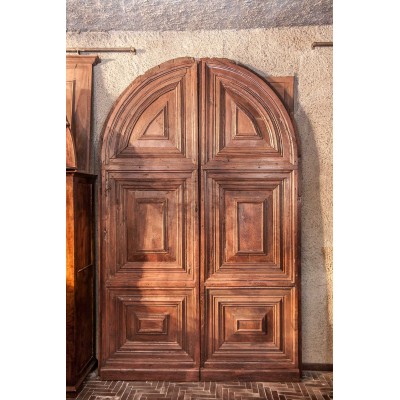the Door
"Few sounds in life, including all urban and rural noises, a knock on the door is in the interest."
Charles Lamb
Various types and shapes of doors have characterized the buildings throughout the history, continuing today to allow the identification of an environment in a certain style code. In reality, in the field of furniture doors are essential to the finishing of an environment, sometimes creating a real complement characterizing itself as real design elements. In the realization of doors, these are fixed on hinges embedded in a frame or frame (frame), which in turn covers a so-called false frame, generally in raw wood, anchored to the wall
From the large portals with arches or tympanums that overlooked and still overlook the facades of palaces and churches enriching the prospect of these, the more or less molded interior, in high-tech natural or artificial materials, enriched with handles, door closers and classic hinges decorated or minimal last generation, the doors offer designers an infinite range of stylistic possibilities.
The possibility of using these gates as a load-bearing element for lighting in an environment should not be underestimated, for example creating full-height openings with non-padded doors, thus allowing light to filter through the louvers created or supplying the bodies illuminating. By applying a mirror on a door, one can avoid the lack of space for its position or by joining it to a mirrored wall there is the illusory effect of doubling the space.
Even in the design (especially if in historicist eclecticism) the doors determine the heights of the surrounding elements providing a good idea to the proportions of the rooms, for example in an entrance or a living room, a "relatively" low door surrounded by scalar elements will offer a point of further perspective giving air to the environment.
(from Wikipedia)





